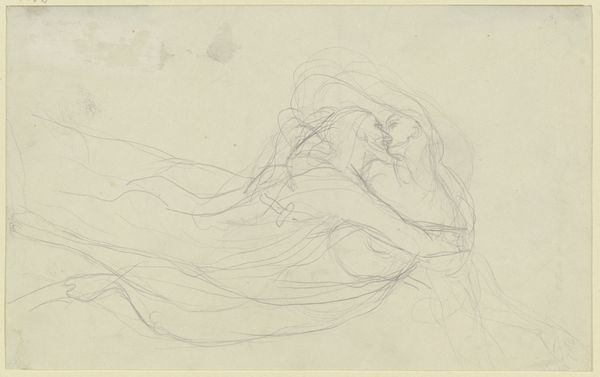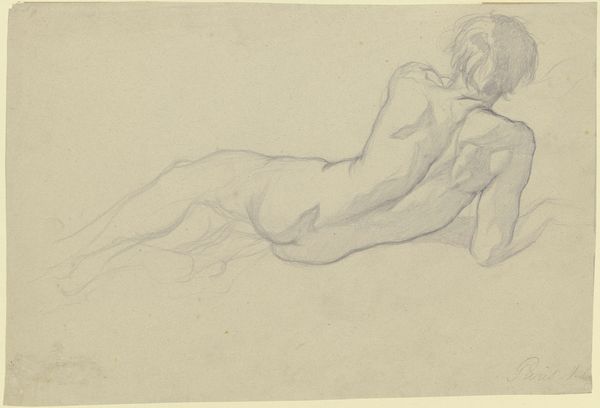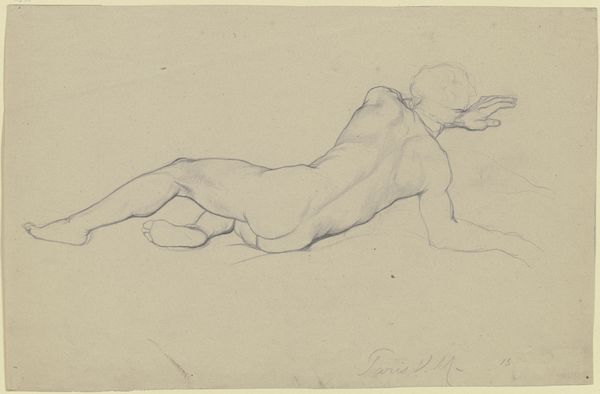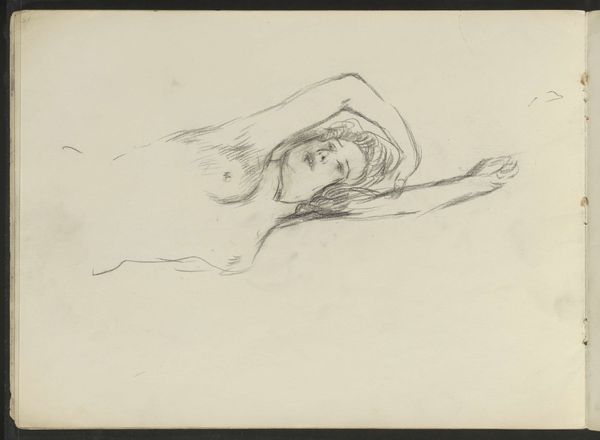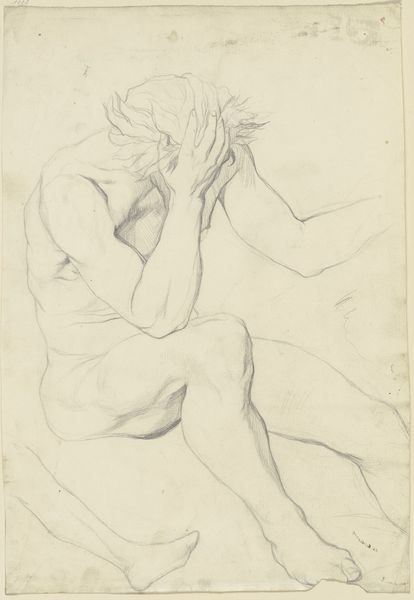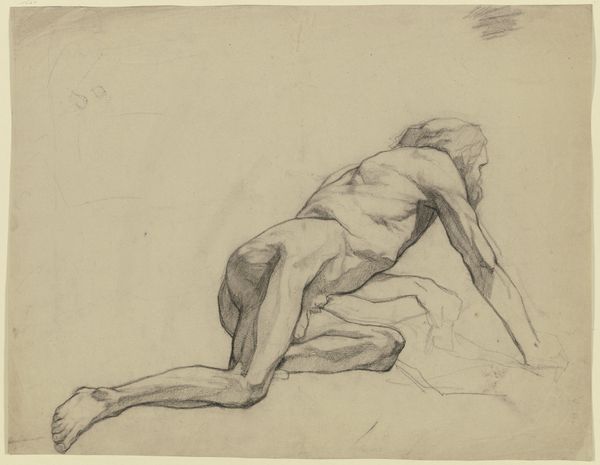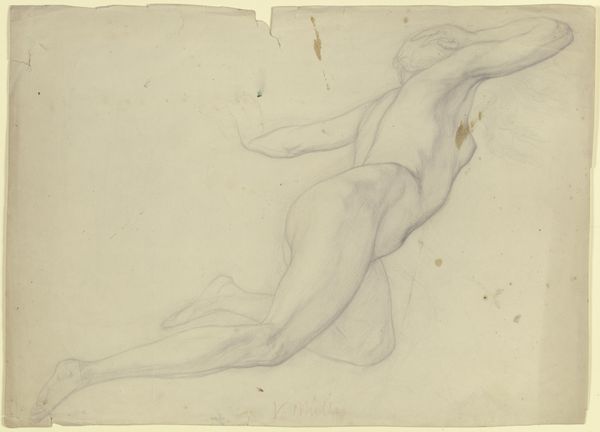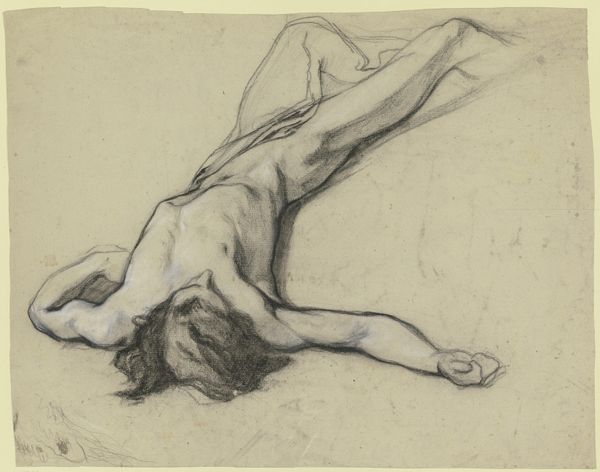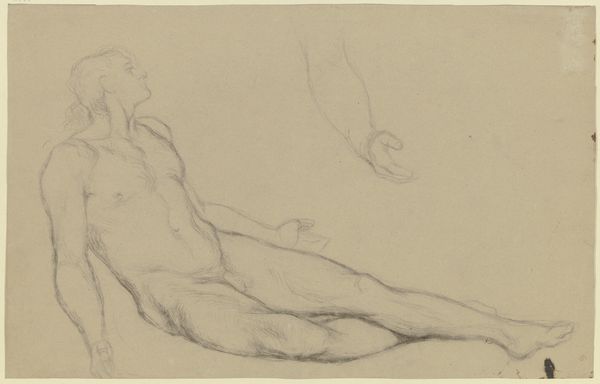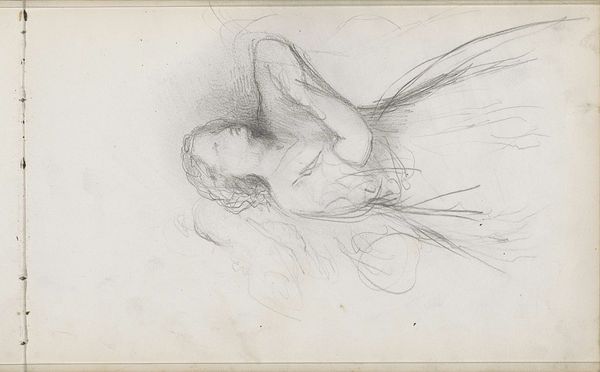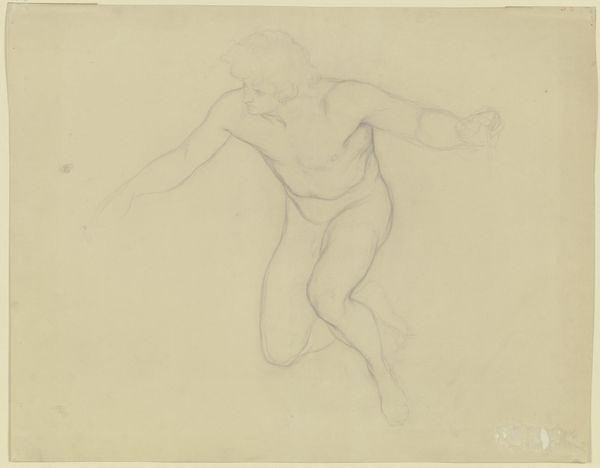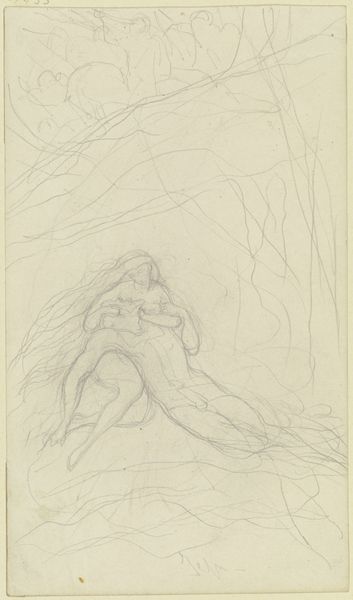
Copyright: Public Domain
Victor Müller sketched Leander's lifeless form, a testament to tragic love, sometime in the 19th century. His languid pose, head tilted back, arms slack, evokes a sense of profound peace, yet speaks volumes of his final struggle. Consider this image alongside countless depictions of death throughout history. The motif of the reclined figure, surrendering to fate, appears as early as ancient sculptures of dying warriors, echoing in Renaissance paintings of martyred saints. It's a timeless visual language capturing the moment of transition between life and death, resonating with our deepest fears and yearnings. Observe his serene expression, a stark contrast to the violent act that claimed him. This juxtaposition reminds us how cultural memory processes tragedy, transforming terror into a scene of serene beauty. The collective subconscious, informed by centuries of artistic and cultural representation, softens the harsh reality, allowing us to confront death with a sense of acceptance, a melancholic aesthetic contemplation. This symbol, like water, ebbs and flows through time, resurfacing, and forever evolving.
Comments
No comments
Be the first to comment and join the conversation on the ultimate creative platform.

